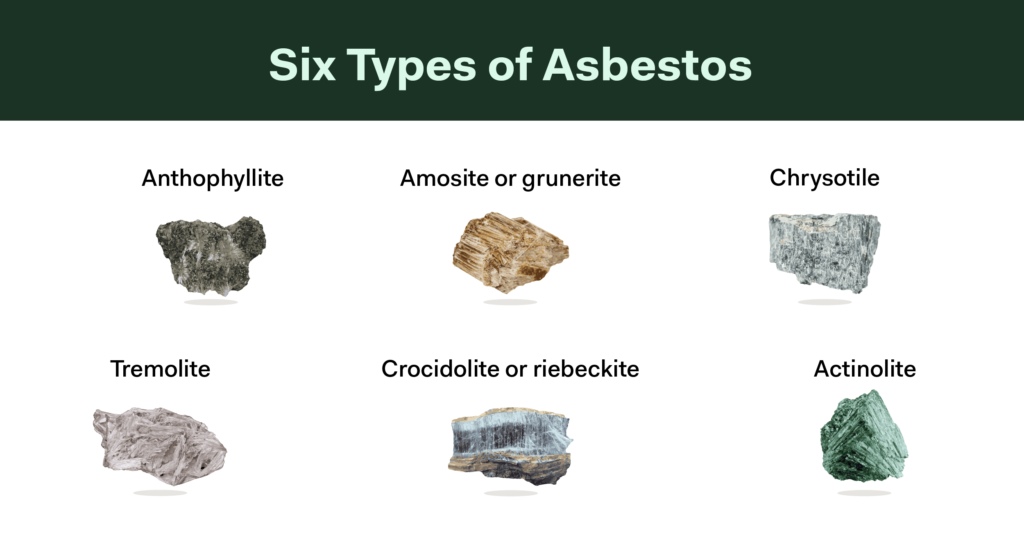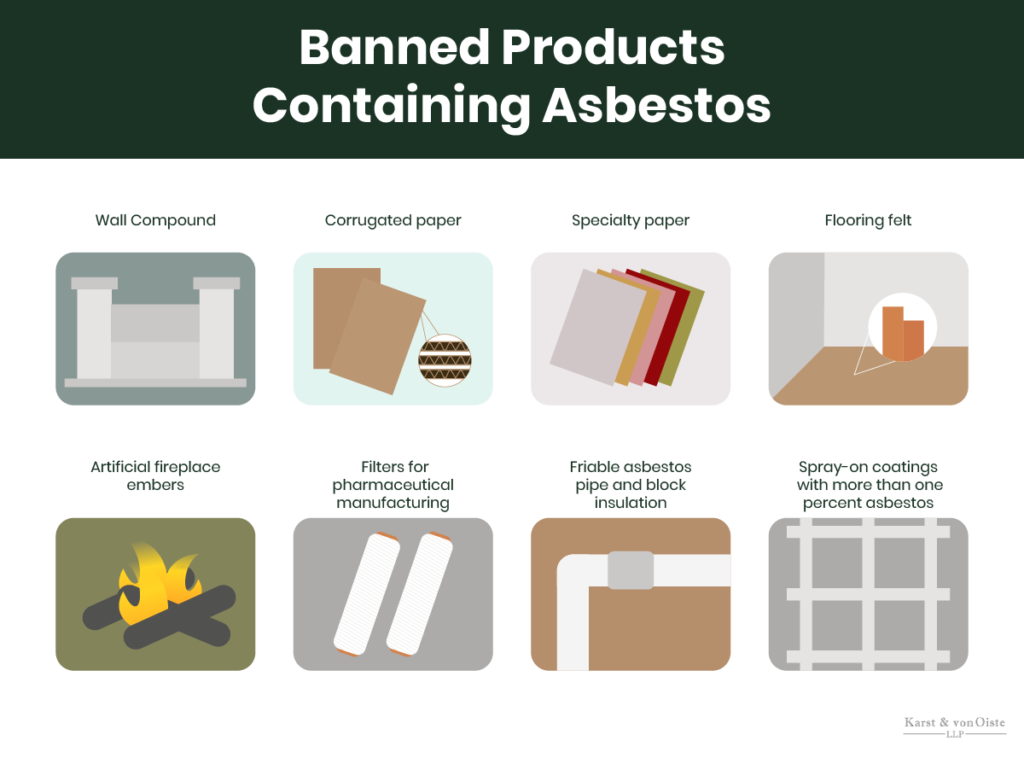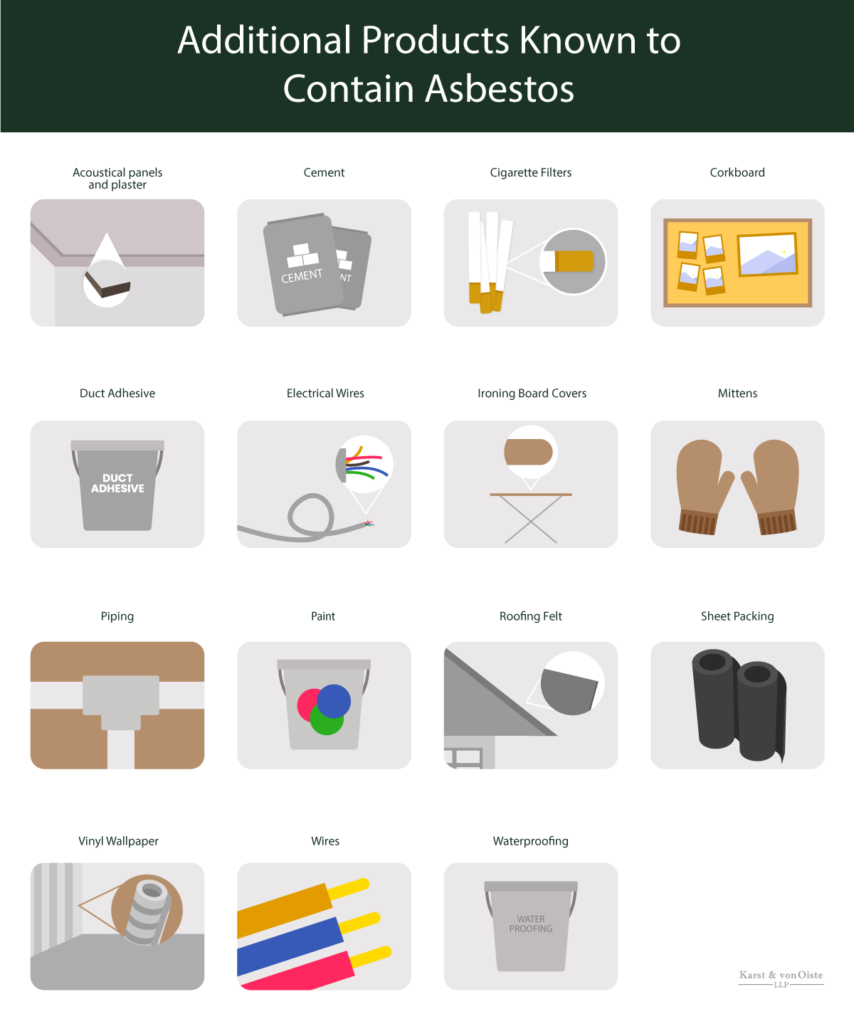There was a time when people believed that Asbestos was a miracle material. Therefore, in the 1900s, many homes were constructed with supplies containing Asbestos. Now, Asbestos is known to be a dangerous toxin that can lead to cancer and other diseases after substantial scientific research.
Although people believe that Asbestos is a thing of the past, it is still present in households today. It can be surprising to learn about the products and materials where they can be found. It is important for homeowners to learn about the items found to contain Asbestos, so they can reduce their exposure. If you’re a new homeowner who has recently bought an older building or you’re in the process of buying items for your home, this page contains the information you need to know.
What is Asbestos?
Asbestos is a silicate mineral that’s made up of tiny fibers. Across the world, it’s naturally found in rock and soil. There are six known types of Asbestos with chrysotile, which account for around 95 percent of commercially used Asbestos. The other types are:
- Anthophyllite
- Amosite or grunerite
- Crocidolite or riebeckite
- Tremolite
- Actinolite

Asbestos was extremely popular in the 20th century because of its strength, flexibility, durability, and resistance to fire and chemicals. Consequently, it was widely used in the manufacturing, construction, and chemical refining industries and it made its way into numerous consumer goods.
Today, there are still many items from the past that contain Asbestos and remain in use. Moreover, there are several products containing trace amounts of Asbestos that are still being manufactured and used. Furthermore, items are also imported into the United States from countries lacking strict laws against the use of Asbestos.
Wasn’t Asbestos Banned in the United States?
In 1989, the US Environmental Protection Agency banned almost all asbestos products. However, this decision was reversed two years later because of protests by lobby groups. As a result, brake pads, gaskets and some other products containing Asbestos continues to be sold in the United States.

The asbestos-containing products that are banned include:
- Wall compound
- Corrugated paper
- Specialty paper
- Artificial fireplace embers
- Flooring felt
- Filters for pharmaceutical manufacturing
- Friable asbestos pipe and block insulation
- Spray-on coatings with more than one percent asbestos
What Are Some of the Common Building Materials That Contain Asbestos?
Since Asbestos was so commonplace, many houses were previously built using several asbestos-containing materials. If your home was built before the banning of Asbestos, you must learn if these materials were used.
Popcorn Ceilings
Asbestos ceilings were banned by the Clean Air Act of 1963. However, the existing product inventory was exempt from the ban. Therefore, these ceilings were installed in the 1980s and even in the early 1990s. To mitigate the risk of exposure, popcorn ceilings, also known as stucco or stipple ceilings, were painted. However, these ceilings can degrade over time and if disturbed, the harmful fibers may be released. Remodeling, repair, and renovation could also cause the dangerous fibers to release into the air.
Insulation
Asbestos was also widely used in insulating materials, including block insulation, spray-on insulation, and loose-fill wall insulation. Although the use of this toxin is restricted today, Asbestos can still be used in insulation, although the overall amount cannot exceed one percent of it.
Adhesives, Bonding, and Sealers
Because of the durable and heat-resistant nature of Asbestos, it was added to caulk, putty, construction tape, and other types of adhesives and bonding solutions up to the 1980s. This is another reason why many older homes continue to have some amount of Asbestos in them.
Asbestos Tiles
Previously, both floor and ceiling tiles were also created using Asbestos. While floor tiles typically included the mineral from the 1920s to the 1970s, ceiling tiles contained harmful fibers between the 1950s and 1980s. However, the exact dates may vary depending on the company that made the tiles.
The Modern Challenge of Asbestos in Talcum Powder
Unfortunately, the use of Asbestos was not limited to building materials. In fact, many commonly used household and personal care items can also contain this harmful fiber. Appliances, hairdryers, pot holders, crock pots, and even toys have been known to test positive for Asbestos. Talcum powder has been of particular concern in recent years. Asbestos makes its way into talcum products often, as talc and asbestos mineral deposits are found close to one another.
In 2015, the Environmental Working Group (EWG) Action Fund found Asbestos in crayons and crime scene fingerprint kits for children. All the items were manufactured in China and talc was identified as the contaminating ingredient. Talc is used to bind crayons together and it’s also an ingredient in the powder used for fingerprinting.
As recently as 2019, Johnson & Johnson’s voluntarily recalled its baby powder after it tested positive for Asbestos. The Food and Drug Administration advised consumers not to use products with a specific lot number. This was not the first time that Asbestos was found in a talc-based product. In 2017, talc contaminated by Asbestos was discovered in children’s makeup sold by both Claire’s and Justice. In 2018, Asbestos was found in other makeup items sold by Claire’s.
How Can I Identify Products with Asbestos in My Home?
It can be difficult to determine where Asbestos can be found in your home. However, if your home was built or refurbished before 1980, it’s quite likely that there is some asbestos present. As homes with Asbestos get older, the products containing Asbestos can deteriorate, resulting in the release of harmful fibers into the air.
While there’s no significant hazard if the material is fully intact, you may still want to do renovations or repairs. In older homes, Asbestos can be found in flooring, paint, roofing materials, furniture, and walls and hence, you must be cautious. It’s best to hire an expert who can inform you about the elements of your home that contain Asbestos before you knock down a wall or rip out the old insulation. Avoid drilling, cutting, sanding or otherwise disturbing any materials that you’re unsure about.
Additional Products Known to Contain Asbestos
Unfortunately, there are still additional product that contain differing amounts of asbestos in them, so these are very important to be aware of.

- Acoustical panels and plaster
- Cement
- Cigarette filters
- Corkboard
- Duct adhesive
- Electrical wires
- Ironing board covers
- Mittens
- Pipe
- Paint
- Roofing felt
- Sheet packing
- Vinyl wallpaper
- Wires
- Waterproofing
What to Do If You Suspect There’s Asbestos in Your Home
Until a professional inspection is carried out, there are some precautions you should take. For example, you shouldn’t spend too much time in the attic or basement where asbestos-containing insulation or fireproofing could have been installed. If you think the floor contains Asbestos, don’t use abrasive products or engage in vigorous scrubbing. Similarly, you shouldn’t power wash, vacuum, or pressure wash areas that could potentially contain Asbestos.
Dangers Posed by Asbestos
These precautions are necessary because Asbestos is dangerous and according to scientists, no amount of exposure is safe. The material is most dangerous when it’s easily crumbled. This means that sprayed-on insulation containing Asbestos is much more hazardous than asbestos tiles or shingles. The latter will only release harmful fibers if they are damaged or disturbed in some way.
Asbestos fibers are most likely to enter the body via inhalation or ingestion. The mucous membranes in the nose and throat trap many of the fibers and they are typically removed through the body’s natural processes. However, some fibers may enter the lungs and the digestive tract causing illness in the individual. The body can’t break down or dislodge asbestos fibers that become stuck.
The International Agency for Research on Cancer, the US Department of Health and Human Services, and the Environmental Protection Agency have classified Asbestos as a known human carcinogen. The three main diseases linked to asbestos exposure are:
- Lung cancer
- Asbestosis
- Mesothelioma
Lung Cancer
The largest number of deaths linked to asbestos exposure is attributed to lung cancer. Individuals involved in the manufacturing, mining and milling of asbestos and asbestos products show a much higher rate of lung cancer than the general population. Symptoms of lung cancer including coughing, changes in breathing, shortness of breath, hoarseness, continued chest pain, and anemia. People who have been exposed to both Asbestos and another carcinogen, such as cigarette smoke, have a heightened risk of developing lung cancer.
Asbestosis
Asbestosis is a chronic respiratory disease that occurs due to the scarring of the lung tissues due to inhaled asbestos fibers. Symptoms include a dry, crackling sound in the lungs when breathing in, shortness of breath, persistent dry cough, chest pain, and chest tightness. In the advanced stages, asbestosis can lead to heart failure. Asbestosis is most likely to occur in people who work with Asbestos. Even though this disease is non-cancerous, it can be fatal.
Mesothelioma
This is a rare form of cancer that tends to affect the chest, abdomen, and the thin membrane that lines the lungs. In rare cases, it can occur in the heart. Around 200 cases of mesothelioma are recorded in the US every year, and almost all of them are linked to asbestos exposure. People associated with the manufacturing and installation of asbestos insulation exhibit an increased risk of developing mesothelioma. This is also an issue faced by those who work in asbestos mines, factories, and mills. People living with asbestos workers or near mining areas could also be in danger.
Other Cancers
According to the National Cancer Institute, cancers of the lung, ovary, and larynx may also be linked to asbestos exposure. In addition, some experts link asbestos ingestion to cancers of the stomach, colon, and kidney, and mouth.
What Determines the Likelihood of Illness
Exposure to Asbestos doesn’t always cause illness. The key factors that affect the likelihood of developing an asbestos-related disease are:
- The amount of Asbestos the individual was exposed to
- The overall exposure time
- How they were exposed (inhalation or ingestion)
Age, gender, general state of health, and lifestyle also have a role to play. However, since each exposure increases the risk, minimizing exposure is of paramount importance.
What to Do If You’ve Been Exposed to Asbestos in the Home
Despite the proven dangers of Asbestos, it has not been banned completely in the United States. Asbestos can be found in a host of items, including building materials, appliances, personal care products, toys, and more. While the presence of Asbestos is a potential danger in homes built prior to 1980, there’s also cause for concern if you purchase certain modern products. If you believe you’ve been exposed to Asbestos and you’ve become ill, you may be entitled to compensation. You should contact an attorney to find out how to proceed.
Resources
Learn About Asbestos. https://www.epa.gov/asbestos/learn-about-asbestos
Asbestos in the Home. https://www.cpsc.gov/safety-education/safety-guides/home/asbestos-home
EPA Actions to Protect the Public from Exposure to Asbestos.
https://www.epa.gov/asbestos/epa-actions-protect-public-exposure-asbestos#banneduses
FDA Advises Consumers to Stop Using Certain Cosmetic Products.
Is Asbestos in Your Children’s Toys?
https://www.ewg.org/news-insights/news/asbestos-your-childrens-toys
When is Asbestos Dangerous? https://ehs.oregonstate.edu/asb-when
Asbestos Exposure and Cancer Risk
Health Effects
https://www.health.state.mn.us/communities/environment/asbestos/homeowner/heffects.html
Asbestos. https://www.cancer.gov/about-cancer/causes-prevention/risk/substances/asbestos



